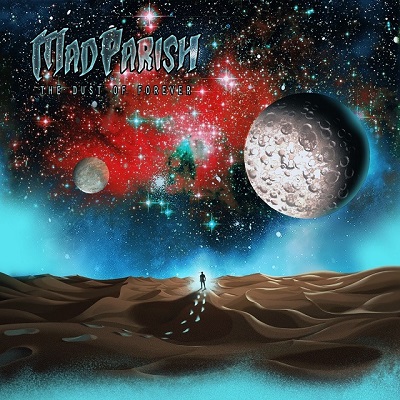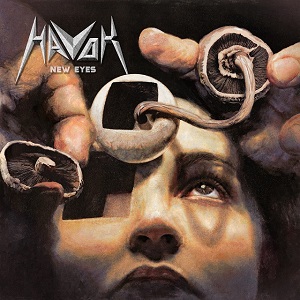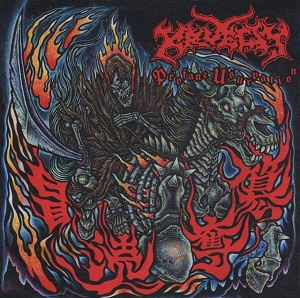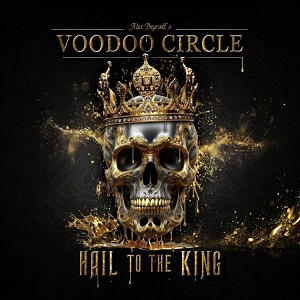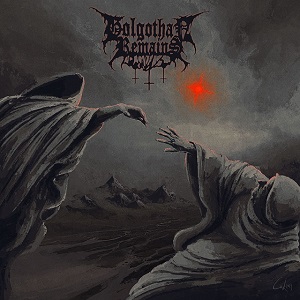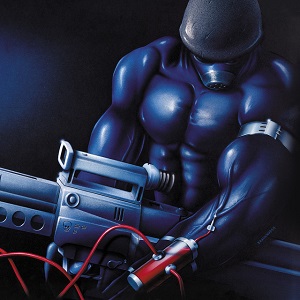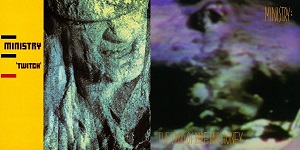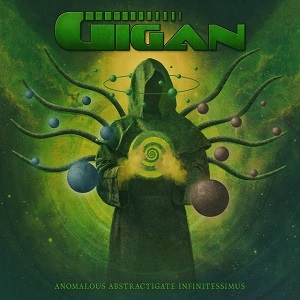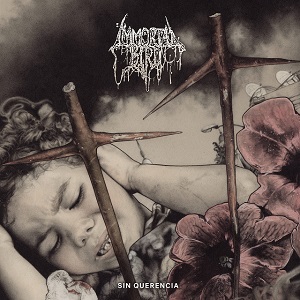Cum On Feel The Noise! KREATOR, CELTIC FROST, VOIVOD, HELLOWEEN Catalog Celebrated
July 23, 2017, 7 years ago

For a period in the mid-late ‘80s (even into the Nineties), practically everything Noise Records touched, turned to gold. American and English labels tried to snap up the next great band in the post-NWOBHM / dawn of thrash era. Be it Anglo arrogance, or inability to crack the language barrier, a plethora of German bands went unnoticed, except at home, and as a result, the Deutsche Marks rolled into the Berlin home office. Many of those early signees are not only still active, but revered, across the globe, as metallic royalty. Eventually, trouble arose in paradise. First a public dispute/lawsuit with Helloween, then dabbling in the changing musical climate. To this day, Grave Digger founder Chris Boltendahl will not comment about head honcho Karl-Ulrich Walterbach.
In the new millennium, the label was first sold to Sanctuary, which was later absorbed by Universal, effectively killing off the name, until 2016, when BMG reactivated the label. It seems to be a two-pronged approach, targeting diehards, with updated classics by Celtic Frost, Kreator and Voivod, while aiming at a curious, younger generation looking to investigate a band's catalog, via a slew of double disc Greatest Hits collections, from many of the biggest names associated with Noise. While fans probably own all the original pressings, these expanded studio recordings are now housed in hard bound digi-paks and contain some (variously satisfying) extras. Sign of those times, unfortunately there are not a lot of bonus tracks / newly available material on the compilations, although each tri-panel digi-pak has a 16 page booklet, with color photos (youngsters in embarrassing fashion/hairdo flashbacks) and liner notes. Odd choice, using one-time Kerrang journo Malcolm Dome, since the Brits rarely embraced any of the German acts, until well into their careers. The comps are also available as an abbreviated, single disc, in standard jewel case.
Reissue campaign:
KREATOR
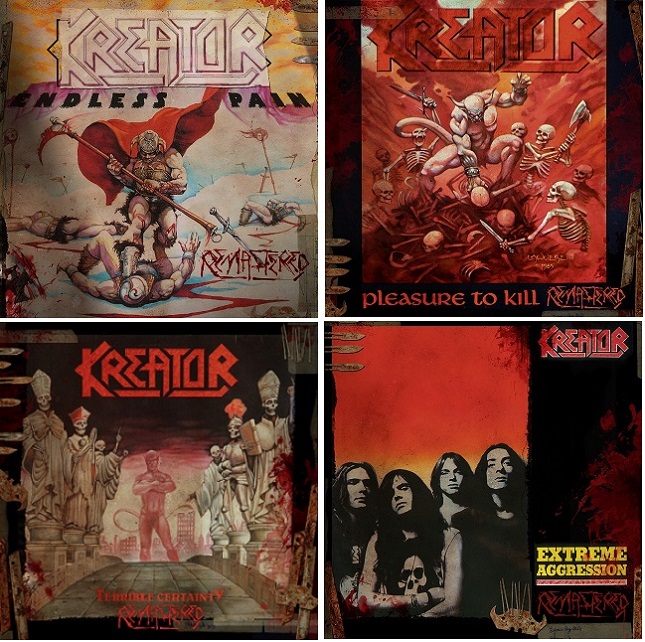
While the first four releases from the Teutonic thrashers have been remastered (the word slashed across the original artwork) and reissued as 180 gram, gatefold dual vinyl, the hard-backed CDs are now augmented with some fan-friendly content. If you thought the Endless Pain debut was Mille Petrozza at his rawest, the inclusion of a half dozen demo cuts, including a triplet of heretofore never-officially available tracks: an echoing, high pitched whine of “Satan's Day”, a speedy, but rudimentary buzzsawing “Messenger From Burning Hell” and Mille varying between maniacal scream and gruff intonations on “Armies Of Hell” (do I sense a lyrical theme?), might change one's opinion. Lifted from the End Of The World demo, by Tormentor, Petrozza's Kreator precursor, the tracks are rough (especially vocally). Inside the 20 page booklet, Mille discusses the original content and goes into band history, like how he couldn't tune his guitar, in the studio, so had to borrow one from someone else. Funny photos of fresh faced kids; the singer/guitarist in a blue (!) leopard print shirt and drummer Juergen “Ventor” Reil (who shares vocal duties) looking like a young Axel Rose. 32 years on, the title track (inspired by Manowar) “Tormentor” and “Flag Of Hate” (their anti-poser song later repressed as a single/EP) are still in-concert favorites.
Just a year later, but the sophomore album was a major step up. Like the others, Pleasure To Kill is now a sturdy, bound edition. The pages of the booklet are meant to recall a scrap book, with old tickets, concert posters and roughly (i.e. non-professional) photos scotch taped to the black backdrop. All capital letters are used for the song lyrics and present day commentary from Petrozza accompanies each from the original running order, not the bonuses (Flag Of Hate EP is included). Interesting tidbits unearthed: title is ode to the Faces Of Death movie (lots of the tunes, by his own admission, are homages to horror films), while the album was recorded as a trio, Petrozza did handle some of the bass work and drummer Ventor wrote the lyrics for “Riot Of Violence”. In 2017, the singer still has no idea what it means! Musically, the title track is pretty much synonymous with Mille/Kreator. While songs float in and out of the live set, that title track, “Ripping Corpse” and “Under The Guillotine” have remained live staples, practically from Day 1. Still the definitive Kreator platter.

Terrible Certainty is sort of an overlooked entry in the Kreator canon, lodged between the penultimate release and the more mature (restrained?) follow-ups. In addition to the original studio recording, 1988's Out Of The Dark…Into The Light EP has been tacked on. Offering one non-album track (short, drum pummeling “Impossible To Cure”), the calling card is their take on “Lamb To The Slaughter”. Not sure whose voice is more insane, Petrozza or the original, by Raven's John Gallagher. Live tracks from the Dynamo Club, in Holland (then THE place for any respectable metal act to play) were initially restricted (to just three) by the time constraints of vinyl, but augmented on earlier CD reissues. Now the truth can be told, as a second live trio is included, regardless of format. But trickery is afoot, as they all come from the '90 show in Berlin. “Love Us Or Hate Us” won't be officially released for another year, on Extreme Aggression. Another non-album track, “Awakening Of The Gods”, off the aforementioned Flag Of Hate Ep, and subtle guitar introduced disc closer 'Behind The Mirror” are also lifted from what would become a live VHS tape. Shame most bands don't give concert attendees deep album cuts/rarities like that, any more. No idea what happened to the revved up, clean vocal attempt at Tygers Of Pan Tang's “Gangland”, that originally graced American copies of the '88 EP. The new CD booklet offers better quality, official photos, as well as tour tees, flyers & ads from the North American tour (where Voivod introduced them to weed, which influenced some of the album material).
By '89, the band had secured a deal with Epic Records, for the distribution of Extreme Aggression, a slightly different sounding album, displaying a major step up, in terms of production and technical ability. It was actually recorded twice: one in Germany (which was ultimately scrapped) and then in Los Angeles. The proposed artwork would also have to be canned, opting for a band photo, even though guitarist Jörg "Tritze" Trzebiatowski developed studio stage fright and Petrozza had to play all the guitars (as he'd done on Terrible Certainty). Shortly thereafter the Berlin Wall fell (coincidence, since the Noise home office was close to the divisive structure?) and Kreator headlined a concert in newly freed East Berlin, showcasing half the songs from said record. The label released the 75 minute show as a VHS tape, but the entire14-song audio portion is now included (German stage raps and all), as an extra disc, alongside the remastered studio outing. Frank “Blackfire” Gosdzik (ex-Sodom guitarist) was already in the fold, for the March 4th, 1990 gig. Odd, listening to these 28 year old tapes, how little Petrozza's emotions and dedication have changed over the years. Still as spiteful and convicted as ever! Sadly, there's no mention, let alone commentary, about that show, the booklet filled with magazine clippings from that period.
CELTIC FROST

Despite Thomas Gabriel Fischer's contention that the Noise headman purposefully withheld/delayed payments, to the point of near starvation, wondered why the Swiss visionaries had been absent from the first round of products, rechristening the label. Don't tell Tom the current label promo sheets still (and on more than one occasion) reference the album incorrectly, as Into Pandemonium! Few bands have undergone such a monumental artistic/sonic change, in the years between Morbid Tales and Into The Pandemonium. Greater, if including the pre-Frostie Hellhammer catalog and the universally loathed Cold Lake album (the only one of the five proper studio recordings not given a second chance in 2017). Pieces included on the posthumous Parched With Thirst Am I And Dying have been reassigned their rightful place, alongside material from the same recording session.
The '84 Morbid Tales debut not only introduced the world to “death grunts” but quickly made the Swiss outfit underground darlings, especially amongst the quickly subdividing metallic hordes, disappointed with Metallica having glossed over their rough edges with Ride The Lightning, released earlier that year. Original German vinyl had just six songs, minus intro, the title track and “Dethroned Emperor”. This tracklisting is rift with speedy, bass grinding songs that not only helped define new sub-genres, but decades later, still serve as inspiration, covered by a new generation of artists: “Into The Crypt Of Rays”, “Dethroned Emperor”, “Procreation Of The Wicked” and the title cut. Even early in their career, the experimental sound effects laden “Danse Macabre” shows the mastermind (?) wasn't content with the status quo. Talk about thinking outside the box! The 2017 version offers an addition four-pack: restored and previously unheard rehearsals for three album tracks, as well as Hellhammer's “Messiah”. Like others in the Celtic Frost series, features a four page history and track-by-track commentary from Xavier Russell, time period ('84 rehearsal and promo) photos, old press kit material and keeping with the original color scheme, band members' names are printed in red. There are a few lines, from '84, quoting Gabriel and/or bassist Martin Ain, for most of the original tunes.

If the debut announced Tom G. Warrior's intentions, then follow-up To Mega Therion honed the killing blade to lethal precision. Hints of orchestral music and female vocal are sprinkled across a few tracks, while “The Usurper” sees a sudden, unexpected dynamic shift. However, then as now, the standout is “Circle Of Tyrants”. Another wtf moment, “Tears In A Prophet's Dream” is a bridge to what would come next. Along with the ten original Eighties tunes, this new edition contains a portion of the Emperor's Return EP (as previously stated, “Morbid Tales” and “Dethroned Emperor” having been added to the debut instead). Not sure why we need two copies of “Circle Of Tyrants”, so only “Suicidal Winds” and “Visual Aggression” are real bonuses. Speaking of the later track, there's a remix (from '88), meaning duplicates of that one as well. “Journey Into Fear”, from the same recording session, but unreleased until Parch With Thirst Am I And Dying, rightfully returns (pun intended), as does “Return to Eve” a studio jam from '85. Nothing, in the way of commentary, from the band, this time around, although Xavier (again with the advantage of three decades' retrospect) goes under the microscope to examine the band/music, at that juncture. Alongside the b&w photos, there's a few color snapshots from the first Celtic gig.
Perhaps disillusioned with the business, Fischer threw an avant-garde monkey wrench (albeit nowhere near the death knell as was its Cold Lake follow-up) into Celtic Frost history. Venturing further down the rabbit hole, the cover of Wall Of Voodoo's “Mexican Radio”, to open, confirms Celtic spitting in the face of what was fashionable in the burgeoning 1987 metal underground. This album is the aural equivalent of an Andy Warhol art film, Into The Pandemonium refuses to kowtow to convention, introducing highbrow concepts into what was (wrongly) often perceived as “dumb” music: operatic female backing vocals, a pair of off kilter instrumentals, employing Emily Brontë as a lyrical muse, the atypical metallic content of “I Won't Dance”, a grinding, military snare cadence “In The Chapel In The Moonlight” (a tune associated with American crooner/drunk/movie star Dean Martin) as well as offering French female spoken/English lyrics to the same song: "Sorrows Of The Moon"/"Tristesses De La Lune", inspired by the erotic poetry of Charles Baudelaire's Les Fleurs Du Mal (used 25 years later, by Therion, in 2012). Mind blowing stuff for metalheads used to the extremity of Slayer, Exodus or even earlier Celtic Frost! Love it, or hate it, today it's perceived as a classic. Cryptic, short response liner notes from Tom & Martin (circa 1987) are part of this new hardbound edition, plus another four panels of current Rock Candy mag writer Xavier Russell and a batch of vintage photos.
Almost an afterthought, given the cock rock predecessor, Vanity/Nemesis attempted to right the ship, even though SS. Celtic had already hit the fatal iceberg. Sort of appropriate the band member's faces are reflected on the front cover in broken shards of glass. Single “Wine In My Hand (Third From The Sun)” creates quite a racket, splitting the difference between Mega Therion and Pandemonium. Unfortunately it's the exception, rather than the rule. A slower, grinding (but none too metal entitled) “Name Of The Bride” offers some grunts, while “Restless Seas” especially noisy “Phallic Tantrum” and “A Kiss Or A Whisper” recall the glory days (all illogically located towards the end of the disc/CD, making listener endure the earlier, less familiar/desirable content). Unfortunately it was too little, too late, the die had been cast. More prominent, almost dual lead female voice, but the staccato vocal delivery of “Wings Of Solitude” is too close to “Cherry Orchids” or “Downtown Hanoi”, off Cold Lake. Could never imagine the band in '84-'85 attempting a Bryan Ferry (ex-Roxy Music) tune, but here's “This Island Earth”. Then there's the ambient midsection to “Vanity” and acoustic guitar introduced “Nemesis”, full of six-string histrionics. A pair of non-album tracks are included here as a bonus (although originally on the B-side of '90 Wine In My Hand EP), an other-than-the-chorus unrecognizable rendition of David Bowie's “Heroes” (which speaks volumes about the sound/direction of Fischer, at the time) and “A Descent To Babylon (Babylon Asleep)”.Even the loquacious Brit can't fill more than three panels about Frost at this point (even 30 years after the fact)! None of the participants could be bothered to talk about it either, judging from the lack of commentary, with just a bunch of alternate promo shoot pix and a few color ones, while in the studio.
VOIVOD

Not just a convenient re-packaging of existing products, the Voivod re-releases offer, by far, the biggest fan bonanza yet! Fold-out, hardbound editions of albums #2, 3 and 4 not only include a separate era appropriate live concert, but a third disc, a DVD compilation dishing up a massive variety of grainy nth generation recorded clips. Taken as a group, interesting to see the metamorphosis of their sound, especially onstage.
With Rrröööaaarrr, the '86 sophomore effort, there's the No Speed Limit Weekend show (Montreal, October 11th - 12th of that same year), where the French Canadians hosted, over two successive nights, DRI, Agnostic Front, Possessed and Sacrifice. Given the technology limitations of the time, particularly for such a bizarre musical beast, it's a rather decent soundboard tape. Long available as a bootleg quality cassette, there are 14 aural assaults, mostly lifted from said studio album, although the mid-section of the concert is heavily weighted towards the War And Pain debut. Surprisingly, they teased three cuts (“Ravenous Medicine”, “Tornado” & “Overreaction”) which would ultimately appear on Killing Technology, six months later. The accompanying DVD boasts pre-production demo and early rehearsal material (often of the same songs), 20+ tracks from their first concert (June 25th, 1983), two almost complete shows from the initial US tour (Spring '86) and 23 (oft repeated) live renditions from '84, including the Jonquiere High School and covers of Venom's “Bursting Out” and Mercyful Fate's “Evil”.

By their Killing Technology ('87), Voivod had morphed into a different band than just three years earlier. The additional live disc (recorded in the same venue, eleven months after the aforementioned festival date) features14 songs, half of which are also on the '86 show, but the heavier/War And Pain era material has diminished, just the eponymous track, “Blower” and “Live For Violence”. Once again, there's preview of forthcoming music: Dimension Hatröss' “Tribal Convictions” already part of the set, even though the album was ten months away. Ditto a live take of the short Batman's TV theme. Indicative of the band's increasing international stature, the DVD (71 tunes) showcases full shows from Brussels, the US, Switzerland, Paris and Toronto, as well as a lengthy stint in Germany. Plenty of repeated offerings, apart from the lone renditions of “Forgotten In Space” and the debut's “Suck Your Bones”.
Dimension Hatröss sees the transformation complete. Third time's the charm, December 21st, 1988 again recording at the Spectrum, in Montreal. The sound quality is better than many live platters, even today. With any crowd banter in their native tongue, seven from the original studio sequence reappearing on the live disc, as well as a cover of “Holiday In Cambodia” (Dead Kennedys), kept true to the original. Speaks volumes of the crossover mindset taking hold, the track is prominent on many of the shows packaged in the DVD. For fans intent on purchasing all three expanded versions, each of the live CD sets offers a slightly altered running order, here reducing War And Pain (while crystal clear) to a mere medley and just “Korgüll The Exterminator” off Rrröööaaarrr.The videos are once again full concerts (10-13 songs each), all from the US: Detroit, Houston, Norwalk, CT and Long Beach, CA, the tracklistings almost exclusively from this album and its predecessor. Wow!
Compilations:
HELLOWEEN
Ride The Sky: The Very Best Of 1985-1998

Although it begins with the two tracks from the 1984 Death Metal compilation (which also includes a pair from Running Wild and Hellhammer): “Oernst Of Life” and “Metal Invaders (re-recorded for the Walls Of Jericho fell-length debut), it's ironic (given the feud that developed between Walterbach and the band) that the initial disc here contains mainly the material Helloween has seen fit, over the last 30 years, to include in their live set. There's little in the way of investigation of anything beyond the biggest hits of the pre-Keeper era. Former guitarist/singer Kai Hansen frequently includes “Ride The Sky” and “Gorgar” in the Gamma Ray setlist. When “Starlight” originally came out, it was breath of fresh air and part of the fledgling speed metal movement that Helloween quickly distanced themselves from (although it really never left Hansen's sensibilities). Hard to believe any Helloween fan doesn't already own this material.
The most extensive (smallest font) liner notes of the bunch, mainstay guitarist Michael Weikath talks to Dome about the formation, early recordings and switch of vocalists (twice!). The protracted legal battle that cost them two years, at the most important moment of their career (and metal's ascendancy) are never discussed. Upon the suicide of original drummer Ingo Schwichtenberg and change to Andi Deris for Master Of The Rings, the discourse becomes more Dome's narrative, although bassist Markus Grosskopf is quoted and Deris gets the final word, surrounding Better Than Raw.
Disc two is a little more puzzling, especially when the words “greatest hits” are bantered about. Also strange, it's the only package not subtitled “Best Of The Noise Years,” since the Germans moved on to EMI, Sanctuary and Castle, material from which is included herein. You'd be hard-pressed to find any Weenie fan that would eagerly claim Pink Bubbles Go Ape or Chameleon amongst the highlights. Yet, Disc #2 begins with “Kids Of the Century”, “Back On The Streets”, “Step Out Of Hell” and “Get Me Out Of Here” (non-album, ‘50s rocker/ B-side to “Windmill” single). At least there's no “Heavy Metal Hamster”! Listening to these selections more than 20 years since relegated to my shelf, the first two are passable, up-tempo anthems, but given the timing (post-Keeper) and the uncharacteristic style of their surroundings (on album: see aforementioned rodent tune) the odd man out. Two decades later, still can't stomach the keyboard laden Chameleon stuff. Most fans agree the mid-‘90s string of platters were a welcome return to form and apart from “Steel Tormentor”, the choices on the latter half of the compilation's second disc are well known, concert favorites.
RUNNING WILD
Riding The Storm: The Very Best Of The Noise Years 1983-1995

The most dichotomous of the Noise collections (even with Helloween's pair of post-Hansen missteps and Grave Digger dropping the first part of their moniker), but both eras of Running Wild's switch from Satanic heavyweights to power metal pirates are universally cherished. Song for song, the greatest value for money as there are 16 tracks on each CD! #1 offers four from the debut and a trio off Branded And Exiled, including the title cut. The music is a bass heavy rumble, with an infectious stream running through the likes of “Genghis Khan”, “Prisoner Of Our Time” (with frequent mentions of the band's moniker in each chorus) and “Fight The Oppression. A simplistic, oft covered “Chains And Leather” closes out the early black metal infatuation. With the arrival of Under Jolly Roger, not only does the lyrical theme adopt the pirate motif, but the music picks up speed. The bass/guitar instrumental “Final Gates” is an unexpected inclusion, but the way it leads into “Conquistadores” makes in indispensable.
Apparently not a lot of color photos of Running Wild exist, as the same group shot (back cover of Death Or Glory CD) is used twice. Dome leads founder/mainstay Rock n Rolf Kasparek through nine studio albums, garnering little stories on each, with a couple of funny Spinal Tap type moments. Interesting factoid: Port Royal sold two million copies, but Blazon Stone is the best seller! In '91 Noise issued The First Years Of Piracy, a ten song Best Of, where 60% is reprised here.
Disc #2 begins with a foursome off the aforementioned Death Or Glory, including video single “Bad To The Bone”. The band was really cooking at this point. Comfortably embracing the buccaneer vibe (despite vehement press opposition early on, as Kasparek tells it), the music is fast, crisp and undeniably catchy. With Blazon Stone, the historical bent, that had always been present, took a more prominent role. Witness “Little Big Horn”. Was it necessary to include another instrumental: “Over The Rainbow”? Closest thing to a bonus track is their cover of Thin Lizzy's “Genocide”, which originally appeared exclusively as a B-side to the “Little Big Horn” single. Black Hand Inn is a concept album, the trio seated at the table supposed to be Rock n Rolf at various stages of life: child, adult, old man. Never knew that.
GRAVE DIGGER
Let Your Heads Roll: The Very Best Of The Noise Years 1984-1986

Three years is sort of a short window for a Greatest Hits package, but Boltendahl's clan are still big business, even if they've long since departed Noise. Didn't stop the label from issuing Best Of The Eighties, a 17 song compendium, when Boltendahl resurfaced in the early ‘90s. Last year, Grave Digger unleashed Exhumation – The Early Years, a baker's dozen updated re-recordings from the Noise era, eleven of which are duplicated here. Despite this package being classified as Grave Digger, through '86, at the end of disc #2 they've tacked on seven of the ten tracks from Stronger Than Ever (released the following year, when Boltendahl fatefully shortened the name to Digger). In terms of the presentation, unlike the others, there's no insert /tray card (color or otherwise) behind the CDs and since he didn't participate in the creative process for Let Your Heads Roll, the accompanying booklet is mostly factual, lifting sparse commentary from the singer, as far back as '85. Guess the bad blood is still boiling! Given the lack of new verbiage, Dome is left to “review” said albums, even though he mentions cover tunes not present on this collection.
Energetic mix of traditional metal and proto-thrash, with Boltendahl's acquired taste yelp, at times reminiscent of Over Kill's Bobby “Blitz” Ellsworth. The first two albums have a heavier tone: “Heavy Metal Breakdown” calling card, “Witch Hunter”, “Get Away”, but somewhat surprisingly, there's a song with “love” in the title on each of their albums, apart from the debut and all are contained within, including the piano begun ballad, “Love Is Breaking My Heart”! By War Games ('86) the tempos had generally dissipated, paving the way for the stab at mainstream hard rock, aka Digger. Witness the Van Halen talking within lyrics style of “Wanna Get Close”, the herky jerky synth introduced “I Don't Need Your Love” and piano ballad title track “Stronger Than Ever”. A speedy, snare drum driven, Motorhead-ish “Lay It On” proves that album wasn't all lame material.
KREATOR
Love Us Or Hate Us: The Very Best Of The Noise Years 1985-1992

Easily the collection with the most growth, without sacrificing their original sound/audience. That would come in the latter half of the Nineties, by then having already departed the Noise stable. Beginning with the wild guitar runs and belching vocals of the '85 Endless Pain debut (half said disc, albeit in altered order), songs like “Tormentor” and oft misunderstood “Flag Of Hate” are still in the live set. Hadn't figured out how to record some of this new music yet, just listen to the flat kick drums that start that tune or the different guitar tone on “Bonebreaker”. A year later, the vocals on Pleasure To Kill are easily deciphered. Another five, jumbled order tracks from that release are part of Disc #1, including the title track, one of (if not THE) biggest sword in their arsenal. A quintet of Terrible Certainty tunes round out the initial piece of silver plastic. Nicely wrapping up the definitive thrash years. Along with some vintage color photos, guitarist/vocalist Mille Petrozza offers a lengthy career retrospective in the CD booklet, including the fact the first two albums were recorded as a trio.
The second disc sees Kreator move away from their rudimentary founding. Through a deal to get Noise bands into the US, Extreme Aggression came out via Epic. As such, there was further improvements in Petrozza's now enunciated snarl (to the detriment of underground fans) and overall production, courtesy of recording in Los Angeles. The endless guitar runs are now replaced with greater importence of staccato riffing. The (temporary) subtlety of a mid-tempo “Some Pain Will Last” shows a new side to the band. It would appear later, on parts of “Terrorzone”. As with the initial CD, there are five tracks from each of three albums. Sonically, “People Of The Lie” could be from any of the Big 4, sounding Americanized. Acoustic guitar? Yes, to open “When The Sun Burns Red”. If the refinements on Coma Of Souls was too much for thrashers to take, imagine their horror with its follow-up: Renewal. Some say it was an early blueprint for Nu-metal (check out “Depression Unrest”). The minimalist aggro “Europe After the Rain” and the guitar running through the title track would say otherwise. Although the latter is a precursor of Load. It would be almost a decade (with Violent Revolution) before Kreator would round back into form.
SKYCLAD
A Bellyful Of Emptiness: The Very Best Of The Noise Years 1991-1995

One of the true gems of the Nineties, this UK bunch spun tart tongue tunes, poking holes in the establishment, thanks to the caustic wit of ex-Sabbat frontman Martin Walkyier. Sadly, such erudite oft acoustic tinged, folky material was at least a decade ahead of popular tastes. 33 tunes, over the two discs, although opening “The Sky Beneath My Feet” (which also kicked off Wayward Sons Of Mother Earth) quickly debuts the fiddle, which would be heard with increasing regularity as they progressed throughout their career. Said instrumentation separated Skyclad from so many other early ‘90s acts, but it's “The Widdershins Jig” where they hit paydirt. Apart from that, the three remaining tracks off the aforementioned debut aren't too far afield from the thrashy Sabbat material, the British Isles being late to the post-NWOBHM musical table. By the time they'd moved onto Burnt Offering For The Bone Idol (half dozen inclusions herein), they'd adopted their first full-time female violinist and Walkyier not only began using a less harsh vocal tone, but a more poison pen. Lot of cynicism including a swipe at Guns N’ Roses/Axl Rose (even quoting his lyrics), in a biting “Declaration Of Indifference”. Initial disc also includes all three studio songs off the Tracks From the Wilderness EP, although not sure a Thin Lizzy cover (“Emerald”) ranks amongst the Skyclad pinnacle. Witty “Thinking Allowed” mixes infectious thrash with banjo.
While the accompanying booklet features extensive text (fellow Brit Dome having a long history with the band, interviewing ex-Satan/Pariah tandem Steve Ramsey, guitar and Graeme English, bass, for this package), there are no photos apart from the trio of group shots used in original releases. By 1994's Prince Of The Poverty Line (widely regarded as the best, most musically diverse Walkyier era disc), the lyrics turned biting commentary on social injustices in post-Thatcher Britain (corruption, homelessness, hunger, etc.), a far cry from the so-called folk metal of today. That album begins the second disc, although all the tracks are mismarked, off by one, in the running order. “Cardboard City” makes a brief experiment with keyboards. Almost a war, “Lowrider” vibe to start “Land Of the Rising Slum”, where Walkyier is practically rapping the words. There's also a ska beat, but all brought artfully around to metallic sensibility (no easy feat). Themes switch from ecological, political, anti-war, sociological, and rallying against religious doctrine. Great stuff. The most cuts (eight, although instrumental “Dance Of the Dandy hound” was only available on some original versions) come from the Noise finale The Silent Whales Of Lunar Sea, which the band claim to like the least! “Art Nazi” rages against the music industry (“I'm tired of eating shit, can I try a different flavor?). In the current, reunion happy musical climate, here's a vote for classic Skyclad.
SINNER
No Place In Heaven: The Very Best Of the Noise Years 1984-1987

More than any of the other recent retrospectives, Primal Fear bassist Mat Sinner's first band is the least known entity in North America. Like Grave Digger, in 2013, Sinner (the man) beat Noise to the punch, re-recording 14 of the old tracks (since Universal held the rights and didn't seem keen to doing anything with the music), under the title Touch Of Sin 2. The 30 songs housed in this new two CD package covers all the aforementioned, apart from “Emerald”, “Don't Believe A Word” and “Heart Of The City”. During the Noise tenure, the band released four albums (total of 41 songs). Arranged chronologically, Danger Zone, the '84 debut for the label, is mostly intact, just three tunes dropped from the running order. Follow-up, Touch Of Sin, (when ex-Accept guitarist Herman Frank joined) is minus two originals and rounds out the initial CD. The '86 Chris Tsangarides produced Comin' Out Fighting sequencing has been jumbled here, as well as leaving off the last two cuts and the AOR sounding Dangerous Charm album contains the most surgery (and a couple of re-arranged tracks), with a total of four edited out.
The former Kerrang scribe interviewed Mat Sinner for the liner notes, where he discusses the history, including Walterbach's refusal to sell their contract to EMI (after the third album), then “forcing” them into a more mainstream (Foreigner) direction, for their final Noise output . At that time, the band were far less metallic than they are today. From the opening “Danger Zone” there's more of a keyboard presence than Sinner would/does use today. This is a major problem with the Bon Jovi-ish Dangerous Charm, which also includes the female duet (paradoxically entitled) “Nobody Rocks Like You”. On the debut, the songs are over quickly, “No Place In Heaven” even fading out. “The Shiver” is an up-tempo Judas Priest clone. Noticeable change in sonic quality, come album #2. A few more ear candy moments, including “Born To Rock” (although it sounds slow, compared to the modern/re-recorded version). At one juncture, the bass on the abruptly ending “Shout” is over modulated, to the point of distortion (imagine the man is, today, bashful over some of those lyrics!). A moody ballad, the neophyte “The Storm Broke Loose” is the type of song Axel Rudi Pell has perfected. Upbeat “Too Late To Run Away” is a nice find. Same can't be said of the synth-pop cover of Billy Idol's “Rebel Yell”. Shame they had to record the declaration “Germany Rocks” back in '86. Today every metalhead worth anything knows it's the capital of all things heavy metal. Hard to believe the poppy “Hypnotized” led off an album.
TANKARD
Oldies & Goldies: The Very Best Of the Noise Years 1986-1995

While the other ‘80s acts quickly moved on from Noise, the Frankfurt based beer mongers made Noise their home for a decade. Sometimes, the simplest names are the best. While right wing politicians both sides of the Atlantic think Cannibal Corpse devour their audience, and Slayer or Annihilator are guilty of grievous crimes, no one ever accused Tankard of being teetotalers! One look at frontman Gerre's prodigious gut and it screams, “Beer!” From the beginning, the German infatuation with foamy beverages has played a part in their lyrics and image. Much like their moniker, the music is simple, but effective: rudimentary thrash, with (especially early on) a hint of crossover/hardcore and limited English lyrics. Morseo than the other discs in this re-issue/relaunch series, there are more visuals: album artwork for the initial four LPs, old photos, even a reprinted Xavier Russell (Kerrang scribe who takes over the liner notes from Malcom Dome, opting for a Q&A format, to the other's prose) review of the debut.
Speaking of Zombie Attack, this collection kicks off with five cuts from said platter, including the titular number and “(Empty) Tankard”, 30 years later, both remain live staples. Half a dozen selections off follow-up Chemical Invasion, a heavier, standard thrash effort, with lyrics about the dangers of drugs, stealing someone else's beer and drinking too much. Notice a theme? An acoustic begun 7:23 instrumental “For A Thousand Beers” shows a different (serious?) side of the band. One of the few dynamic changes across the 35 song, two-disc package. Just five from The Morning After (including title track), which the frontman admits to liking, but disappointed with the sound. “F.U.N.” sees a harsher vocal approach and some cowbell. Surprised to see half a six pack off the Aliens EP, including sarcastic “666 Packs”, with a snippet of Jesus Christ Superstar thrown in.
Time for Disc #2. At that point in history, metal (and especially thrash) became an outcast. Thus 1990's Meaning Of Life (cartoon drawings of German Chancellor Helmut Kohl, the Pope and Mike Tyson on bar stools, in an establishment adorning the cover) met with some resistance. In retrospect, seems like a classic whammy bar/hammer on, Teutonic thrash album (Sodom/Kreator), just five years too late. Once again the tracklisting is off by one track (for the entire running sequence), supposedly beginning with “Live To Dive” which finished the prior disc. “Space Beer” being the lone song to survive beyond the release. “Freibeer”, one of four lifted from the paradoxically entitled Stone Cold Sober, was their first tune sung in the native tongue, as such, the call for free beer, for everyone is still a rousing showstopper in Germany. Not sure I've ever heard 94's Two-Faced (a mere trio of songs here) nor The Tankard (final four, disc closing tracks), so a completist's sampling here is OK by me.
KAMELOT
Where I Reign: The Very Best Of The Noise Years 1995-2003

Says something about the A&R ears at Noise that into the early ‘90s, when metal was a dirty word in all corners of the world but Germany and Japan (the latter still fondly looking back to the ‘80s and not pushing forward) that they'd sign Kamelot, who have gone on to great success. That said, odd the label would opt for a two-disc retrospective from one of the “newer” signees, when the rest of the initial batch were all legacy acts. However this compilation is bound to be quite the revelation for most of today's Kamelot fans, beginning with the Crimson Glory inspired debut (especially the Midnight aping vocals of Mark Vanderbilt). The second album (Dominion) opts for a more progressive flare, with greater reliance on keyboards. Each of the first three releases are afforded four tracks on the sparse Disc #1, although the re-recorded “We Are Not Separate”, originally on Eternity, is included on Disc #2. Only mastermind/guitarist Thom Youngblood and drummer Casey Grillo (who joined for the third album) remain from this era of Kamelot. The accompanying CD booklet “interview” is compiled from old publications, nothing really new, nor much about the actual songs, mostly biographical data and technical, recording stories.
Shortly before The Fourth Legacy, I was introduced to Thom, at an Iced Earth show, in Philadelphia. At the time, he was working for clothing company Kappa, in Germany, but since we both enjoyed a sound not too familiar to North Americans, we struck up a professional friendship. We hung out at his home in suburban DC and when he and his girlfriend (soon to be wife) moved back to Florida, made several trips to Tampa to see live local shows, hear new material, for each successive record, and submit reports/reviews to both BraveWords and Metal Maniacs. Ditto a later trip to the studio, in Wolfsburg, Germany. Fourth Legacy remains my favorite CD, seamlessly marrying the progressive and power metal streams into an aggressive, guitar oriented sound the band has never replicated. It also is the last album with totally disconnected songs, thereafter beginning an affinity for extensive concepts and/or full blown concept albums. Almost the entire first half of the album is here, opening with the galloping one-two punch of “New Allegiance” and the title cut. Strains of the Middle Eastern tinged “Knights Of Arabia” separated Kamelot from the sound-alike pack. Granted, it's been more than 15 years, but sadly, when it comes to the live set, this is an all but forgotten album (as are its predecessors). If you don't own this album, in its entirety, definitely check it out.
Just three choices from Karma, four from the symphonic goth-operatic Epica and none (?) off the heavier, darker Noise finale, The Black Halo. “Wings Of Despair” polished the rough (metallic) edges, similar to fellow-Floridians Savatage, on post-Hall Of The Mountain King material. A speedy “The Spell” is a flashback, while the stylized, mid-tempo “Karma” was a portent to the band's future. Built around an infectious, upbeat intro and prominent, recurrent keyboard note, “Center Of The Universe” remains an in-concert favorite. “The Edge Of Paradise” rides a similarly frenzied synth melody, before female vocals (Thom's wife) pipe up. She can also be heard on the comp closing “III Ways To Epica”.
(All photos courtesy of Noise Records)

